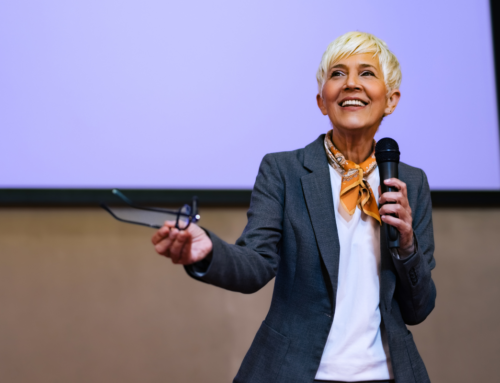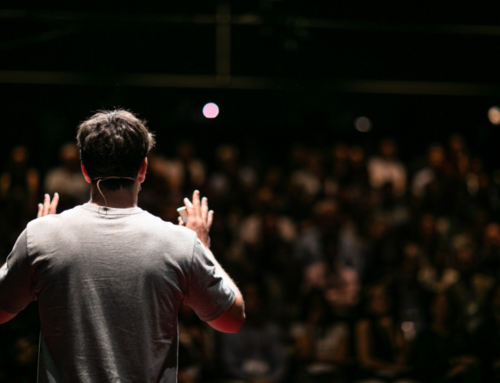I first published this blog a year ago in honor of MLK. So many people have remarked on it that I've decided to republish it today, with minor modifications, once again in honor of the 20th century's greatest orator.
Justly celebrated as one of the greatest speeches of the 20th century, Martin Luther King, Jr’s “I Have a Dream” speech becomes even more remarkable when you know that the last 6 minutes of the 16-minute speech were ad-libbed. King felt that he was not reaching the audience the way he wanted to with his prepared text (and Mahalia Jackson, standing nearby, was urging him to "Tell them about the dream, Martin!"), so he called up the metaphor that he had been thinking about for some months, and uttered the unforgettable plea for racial justice, “I have a dream.”
The first 10 minutes of the speech would have been brilliant enough for most speakers to retire on. King began by echoing the Biblical language of Lincoln’s Gettysburg Address, saying, “Five score years ago, a great American, in whose symbolic shadow we stand, signed the Emancipation Proclamation. . . . But one hundred years later, we must face the tragic fact that the Negro is still not free.”
King then goes on to talk about the “promissory note” owed to Black Americans – the bad check – the freedom that was still due. He says, “But we refuse to believe that the bank of justice is bankrupt.” The response was a roar, and King moved on to talk about “the fierce urgency of now,” repeating the line again and again that “now is the time” for America to make good on that bad check. In fact, the speech is perhaps the best example of the effective use of repeated lines that gather power and force with each repetition.
For an average speaker, that call and response would have been good enough. But King was inspired by the occasion, the locale, and the enormous crowd, and he made an on-the-spot decision to reach deeper.
At the ten-minute mark, King wraps up the section by saying, “No, no, we are not satisfied, and we will not be satisfied until justice rolls down like waters and righteousness like a mighty stream.” This stock Biblical phrase from the Baptist preaching tradition is the signal that King is going off-text, and he next does something truly dramatic: he reaches out to the audience directly, saying, “I am not unmindful that some of you have come here out of great trials and tribulations.”
“Go back to Mississippi, go back to Alabama, go back to South Carolina,” he continues, and then comes the famous metaphor: “I say to you today, my friends, that in spite of the difficulties and frustrations of the moment I still have a dream.”
As King works up to the mighty peroration of the greatest American speech of the 20th century, his cadences continue to rise and fall, going higher each time to signal his passion for the subject. The top of the rhetorical arc comes with the closing lines, when King stands on tiptoe, and raises his right hand, and says:
When we let freedom ring, when we let it ring from every village and every hamlet, from every state and every city, we will be able to speed up that day when all of God’s children, black men and white men, Jews and Gentiles, Protestants and Catholics, will be able to join hands and sing in the words of the old Negro spiritual, “Free at last! Free at last! Thank God Almighty, we are free at last!”
The roar from the crowd is unmistakable: King has connected with them, he has given an unforgettable speech, and by digging down deep into his soul, he has forever changed the world.








That was one great blog post. I remember hearing that Martin Luther King at one point said he could feel the end coming, that vicotry is just over the hills, and that he himself might not make it over that hill but as the people together that victory was about to come. And not too many weeks after regretably he was assasinated.
Hi, Chris —
Thanks for your comment and kind words. The speech you refer to was one given by MLK on April 3, 1968, the night before he was assassinated, known as the Promised Land speech, because in it Reverend King says that he may not make it with his audience to that Promised Land of racial justice. It’s quite eerie to read the speech knowing what is to come: “I just want to do God’s will. And He’s allowed me to go up to the mountain. And I’ve looked over, and I’ve seen the Promised Land. I may not get there with you. But I want you to know tonight that we, as a people, will get to the Promised Land.”
Pardon this question that’s not about the content of the speech.
Who are the two men of color, wearing white Indian-style shirts and white Nehru hats … standing behind MLK in that most famous photo of him delivering the speech?
Hi, David —
Those are Nation of Islam folks who were providing security for MLK. He had constant death threats.
Nice blog. One correction. I have read in several sources that the men in white hats are NOT Nation of Islam members, but rather off-duty policemen, firefighters, and union members, who were providing security to the march as volunteers.
The speech is magnificent and moving, even today.
Hi, Luis — thanks for the comment and the historical insight about the men in white!